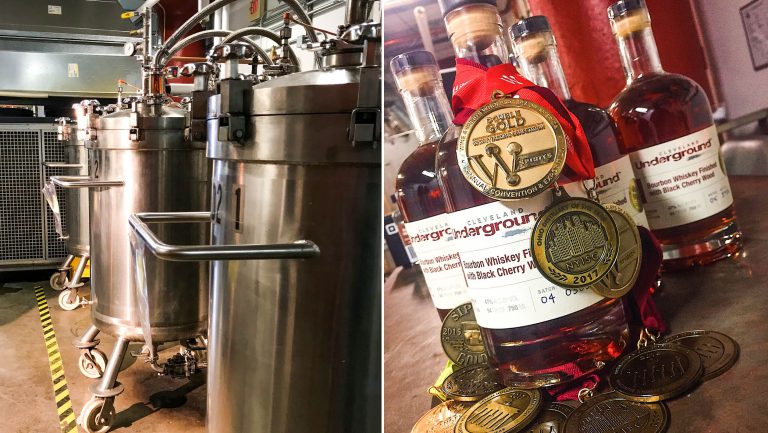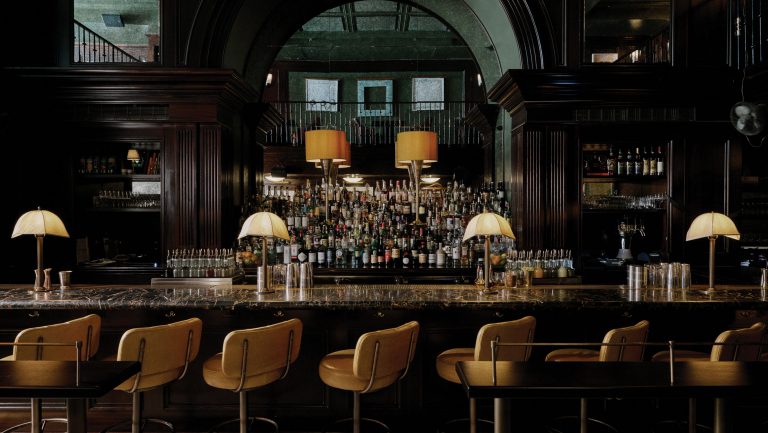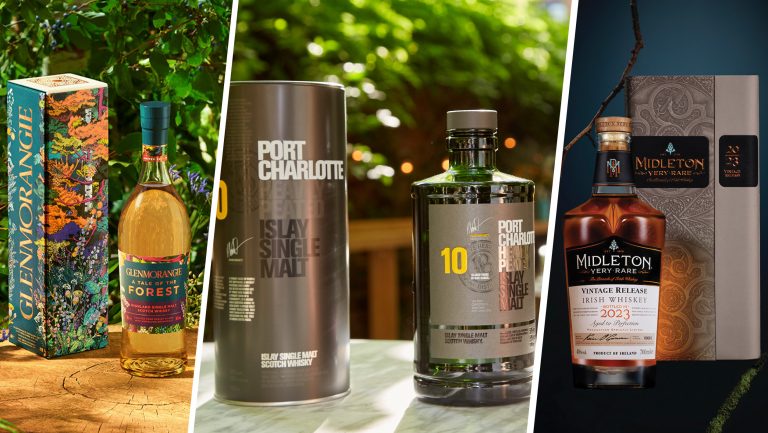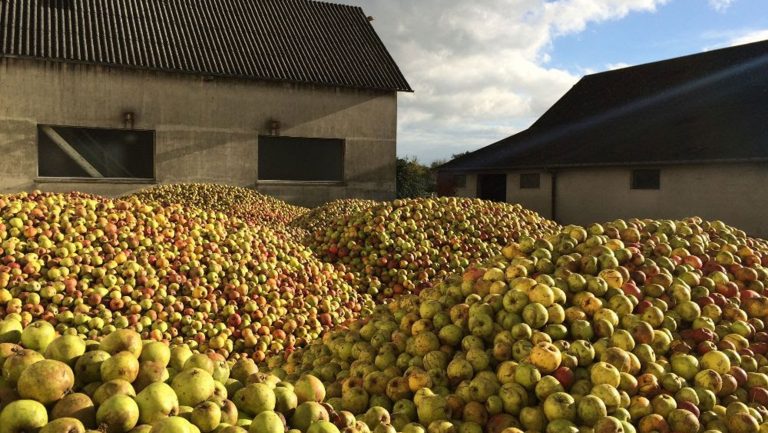The late Tom Petty was right. The waiting is, indeed, the hardest part. That’s especially true for the producers of brown spirits, as they bide their time until their whiskey is ready for the market. While many craft distillers prefer to wait at least two years, if not three or four, for the barrel to do its job, others have been employing a variety of techniques designed to accelerate—or at least enhance—the wood’s effects on the finished spirit.
Based in Gardiner, New York, Tuthilltown Spirits was one of the more prominent distilleries to experiment with the technique of small-barrel aging. When it launched its Hudson Whiskey line about a dozen years ago, the cofounder and distiller Ralph Erenzo experimented with casks ranging in size from 3 to 10 gallons—as opposed to the standard 53-gallon cooperage—to age the whiskey for shorter periods (a handful of months versus the typical two-plus years). The rationale was that the barrels’ smaller sizes would bring more of the spirit into contact with the wood.
The Copper Fox Distillery in Sperryville, Virginia, steeps charred wood chips in its barrels of whiskey to enable additional layers of flavor and aroma to quickly express themselves in its spirits. But distiller and owner Rick Wasmund’s efforts in faster aging have extended well beyond traditional oak chips; he’s also experimented with chips of fruit woods like apple wood and peach wood. Depending on the batch and the particular wood used, these experiments, he says, have helped him achieve the desired flavor profile and level of complexity for his products in less time than traditional barrel aging methods would require. Wasmund says the chips usually produce a finished whiskey within 18 months.

Don’t miss the latest drinks industry news and insights. Sign up for our award-winning newsletters and get insider intel, resources, and trends delivered to your inbox every week.
In Cleveland, Ohio, Cleveland Whiskey has gained considerable media attention for its pressure aging, in which high pressure is used to force the spirit through wood inside a stainless steel tank, speeding up the wood’s influence on the whiskey. Cleveland’s CEO and founder, Tom Lix, says that the method turns the years-long maturation process into a 24-hour affair. “Think about a sponge [underwater], when you squeeze it,” says Lix. “When you let it go, water rushes in. That’s essentially what we do, but we take young spirits and put them in stainless tanks with a measured amount of wood.” Lix says he thinks of Cleveland Whiskey more like a technology company than a craft distillery.
All these distilleries have produced popular, well-regarded spirits, but that hasn’t silenced the key question of whether there’s truly any substitute for one of whiskey’s most critical ingredients: time.
The Science Behind Spirits Aging
Biochemist Gary Spedding doesn’t believe there’s a substitute. Spedding, the managing owner of Brewing & Distilling Analytical Services in Lexington, Kentucky, says it’s important to think of a barrel as a kind of catalytic engine. “It’s a complete catalytic mechanism,” he says, “as complex as the human body, in terms of metabolism and reactions.”
During spirit maturation, the hemicelluloses—which are embedded in the cell walls of most plants, including the trees whose wood is sourced for barrels—break down, introducing not only sugars to the liquid but acetic and other acids. Acetic acid reacts with ethanol (the spirit’s alcohol content), forming ethyl acetate, a natural component of an aged spirit. It’s possible to add extra ethyl acetate to compensate for the reduced amount of the compound formed in shorter maturation periods—and, Spedding points out, a patent exists for such a process—but by introducing the extra ethyl acetate into the spirit, the distiller could subject his product to unintended consequences.

“You’re perturbing a chemical system,” Spedding explains. “If it works, all well and good, but by putting in more ethyl acetate, you’ve now affected all of the other reactions that need to take place and that are dependent upon the concentration of that component in solution at any point in time.”
Even if, through trial and error, a distiller could figure out what the approximate acid level of the spirit should be and adjust the acidity accordingly, Spedding says the same problem with the ethyl acetate would persist because the entire chemical system and the equilibrium of the spirit would have been disrupted. Changing the acidity, as opposed to allowing the natural process to gradually take place, he says, has the potential to affect other reactions, causing them to take place too fast or not take place at all.
Aside from any acid-related considerations, a huge unknown in spirits aging is the rate of oxidation—how fast or slowly oxygen is introduced through the spirit across the entire maturation period.
“It seems to be that [oxidation] has to take place slowly and in just the right proportions,” says Spedding. “If you’ve figured out the amount of oxygen that would need to be consumed within five years to produce a five-year-aged bourbon, it’s not like, ‘Oh, now that I know how much oxygen to throw into it, let me throw that oxygen into the system and then see if I can do it in the space of a couple of days.’ It certainly doesn’t work that way.”
Much of the science of spirits aging remains largely theoretical and is constantly being tested. But there’s an economic argument to be made for trying to streamline the aging, especially when you consider how focused on the bottom line major spirits production companies are. Spedding counters it, though, by suggesting that the major distillers have all certainly thought about rapid maturation but have not put it into place. “You have to ask why,” he says, suggesting that it’s not simply a matter of tradition. “If they could do it in six months, the whiskey would be out on the market in six months.”
Mark Gillespie, the host and executive producer of the podcast WhiskyCast, makes a similar point. “Whiskey makers have been trying to speed up maturation for decades,” he says, “and if they’d been able to come up with a technique that actually worked, we’d have seen the Scotch Whisky Association try to get the ‘traditional practices’ rules taken out of the laws governing Scotch whisky production.”
But there’s no reason distillers have to let science or tradition get in the way of a good spirit.
“Craft distillers are already fighting an uphill battle,” says Spedding, “having to price themselves at $30 to $60 more for a product that’s not necessarily worse but certainly no better than the stuff that the major guys are producing. My thought would be that as a distiller today, you’d want to get something to market very quickly, especially if the customers enjoy it, which I think they certainly can.”
Weighing Rapid Aging Against Tradition
But what happens, Spedding asks, five years down the road, when that distiller’s traditionally aged product comes of age and is ready for market? Are consumers going to be willing to spend an additional $20 for a bottle—which was more expensive to produce—if they already like the younger, rapidly aged version?
“I think people buy and enjoy things for different reasons,” says Julia Ritz Toffoli, the founder and principal of the organization Women Who Whiskey. “The craftsmanship and brand story—for example, for a longer, traditionally aged spirit—might be more important to one drinker, while the novelty and innovation of a rapid aging process might be more interesting to another. Taste is a huge—and subjective—part of it, but given the sheer number of options there are to choose from, it’s usually not the only factor that people consider when they buy a whiskey.” But, she adds, “I think that, ultimately, there’s no true substitute for time.”
Traditional and nontraditional maturation techniques needn’t be mutually exclusive. Long before William Grant & Sons fully acquired Tuthilltown in 2017—seven years after William Grant bought the Hudson Whiskey brand—Tuthilltown had mostly moved away from small-barrel, short-term aging, but it still employed the smaller containers to some extent. “We are now predominantly filling 53-gallon casks,” Erenzo says, “but [we] still fill 10s and 26s because they deliver a vanilla note that the big barrels don’t yield.” When Tuthilltown experimented with short-term aging in 3- to 10-gallon barrels, the spirit had plenty of flavor and aroma but was noticeably sharper.
Copper Fox’s Wasmund says that speedy aging was for the most part a side benefit of the distillery’s wood-chip method. That method is more about the unconventional flavors he’s able to pull from woods that haven’t traditionally been used to mature whiskey. Says Wasmund, “It’s just a rich and complex new set of ingredients on your taste buds.”
Wasmund and many of his peers in the realm of alternative aging certainly have enough accolades to suggest that they’re doing something right. The Beverage Testing Institute has awarded Copper Fox Rye Whisky and Wasmund’s Single Malt Whisky gold medals, and the spirits scored 91 and 94.5 points, respectively, in Jim Murray’s Whisky Bible. Visit Tuthilltown’s website and you’ll encounter a list of nearly 100 awards from organizations like the International Wine & Spirit Competition dating back a decade. Cleveland Whiskey has more than 20 gold medals to its name.
“I think the industry invests a lot of effort in equating age with quality,” says Wasmund. “But all you need to do is let people try [the spirit] blind and take it from there.”

Dispatch
Sign up for our award-winning newsletter
Don’t miss the latest drinks industry news and insights—delivered to your inbox every week.
Jeff Cioletti is a former editor in chief of Beverage World magazine and the author of the books The Drinkable Globe, The Year of Drinking Adventurously, Beer FAQ, and the upcoming Sakepedia. He’s a Certified International Kikisake-shi (sake sommelier).







